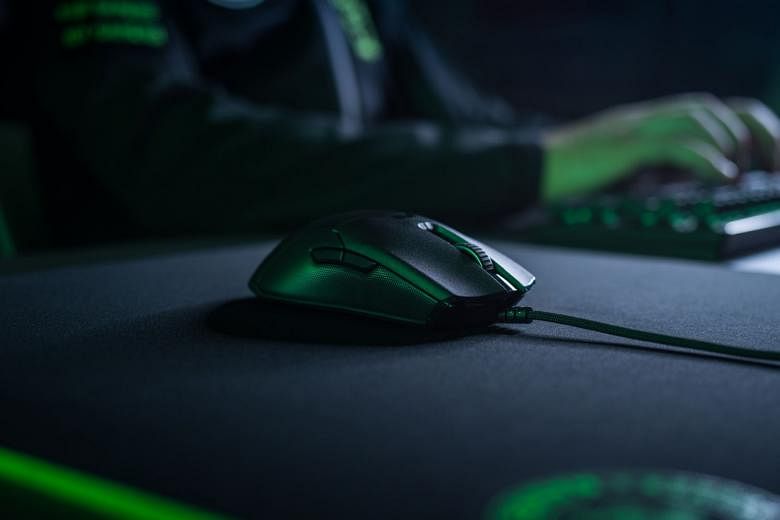As a middle-aged gamer who needs every bit of advantage just to stay in the game, I was excited to try out Razer's latest flagship Viper gaming mouse.
Vetted by the gaming firm's stable of top e-sports athletes, the Viper boasts a number of features to give users a leg-up on the competition.
For one, it is Razer's first mouse to use optical switches. The gaming firm previously used optical switches in its Huntsman Elite gaming keyboard from last year.
Unlike traditional mechanical switches, which require metallic contact between two parts to trigger a mouse click, the Viper's optical switches uses an infrared light beam - passing through a shutter - to do the same.
As a result, mouse clicks are registered instantly. Razer says the Viper has a response time of 0.2 milliseconds, which is three times faster than traditional mechanical switches.
But its snappy response is wasted on me. In an online mouse click test, in which I have to click on a circle on a Webpage as fast as I can, the Viper performed as well as my usual Logitech gaming mouse, which uses standard mechanical switches.
Regardless of the mouse used, I averaged around six mouse clicks per second, which is probably due to my own physical limitation and clicking technique.
However, there is also another advantage to using optical switches - durability. Razer says optical switches are less prone to wear and tear because they have fewer moving parts. The Viper's optical switches are rated at up to 70 million clicks compared to up to 50 million clicks for Razer's own mechanical switches.
At 69g, the Viper is one of the lightest mice in the market. It feels agile in my hand, gliding smoothly across my desk with ease. Its symmetrical design is suitable for both right- and left-handers.
Despite the lightweight build, Razer still manages to put an RGB LED in the mouse to illuminate its distinctive snake logo. The colour and behaviour of the LED can be adjusted using Razer's Synapse software. This app is also used to assign in-game functions and macros to the Viper's eight programmable buttons. But I typically disable these buttons because I tend to hit them by accident in heated gaming moments.
These accidental clicks could be costly in an actual game, which is why Razer has placed the DPI switch at the bottom of the mouse. This switch lets you toggle between five DPI settings (between 100 and 16,000 dpi) that can be customised in steps of 50 dpi using the Synapse app. A light indicator lets you know the current DPI setting. These settings are stored in the mouse's onboard memory, so they are transferred if you switch computers.
To ensure the mouse is unhindered in its movements, Razer says the Viper's cable is covered with a new low-drag material with less friction than other cables. But frankly, I cannot tell the difference in texture between this cable and the similarly-braided ones on other gaming peripherals. But I must admit that the Viper's skinny cable feels loose, flexible and less likely to end up in knots.
Razer's latest Viper gaming mouse is lean and agile, pared down to the essential gaming features desired by its target audience of e-sports gamers. It won't make you a professional gamer, but it is still a blast to use.
FOR
Optical switches less prone to wear and tear
Lightweight and mobile
Customisable DPI settings
AGAINST
Fast response time has no real-world impact for average gamers
SPECS
Price: US$79.99 (S$110)
Sensitivity: 100 to 16,000 dpi
Maximum speed: Up to 50 ips
Connectivity: USB
Weight: 69g
RATING
Features: 4.5/5
Design: 4.5/5
Performance: 4/5
Value for money: 3.5/5
Overall: 4.5/5
ST Tech Editor's Choice


